WARNING: Spoilers. Several of them.
It was July 19th, 2001 when Final Fantasy X—one of Square Enix’s greatest RPGs to this date—came to be. Originally released on the PlayStation 2, the game managed to perfectly mix new and old gameplay mechanics and became a major turning point of the franchise’s history.
And as it is often the case with anything Square Enix develops, the game is not without its fair share of curiosities and great interpretations. So join us to celebrate the occasion with these 24 mostly unknown facts about Final Fantasy X.
Note: Affiliate Disclosure: At PlayRatedGames, our content is made possible by our readers. If you purchase a game or product through links on our site, we may receive a small commission. This support helps us continue publishing honest, independent reviews. Our recommendations are based solely on what we believe offers real value to players — never influenced by affiliate partnerships.
“Listen to my story…”
- Tidus, Jecht, and the avoidance of feelings
- Yuna, her family her path and her relationships
- Auron died too early, even though he doesn’t look like it
- Seymour’s fault is not (entirely) his own
- O’aka, Wantz, and their contributions
- Game-changing innovations
- Development, design & writing
Tidus, Jecht, and the avoidance of feelings
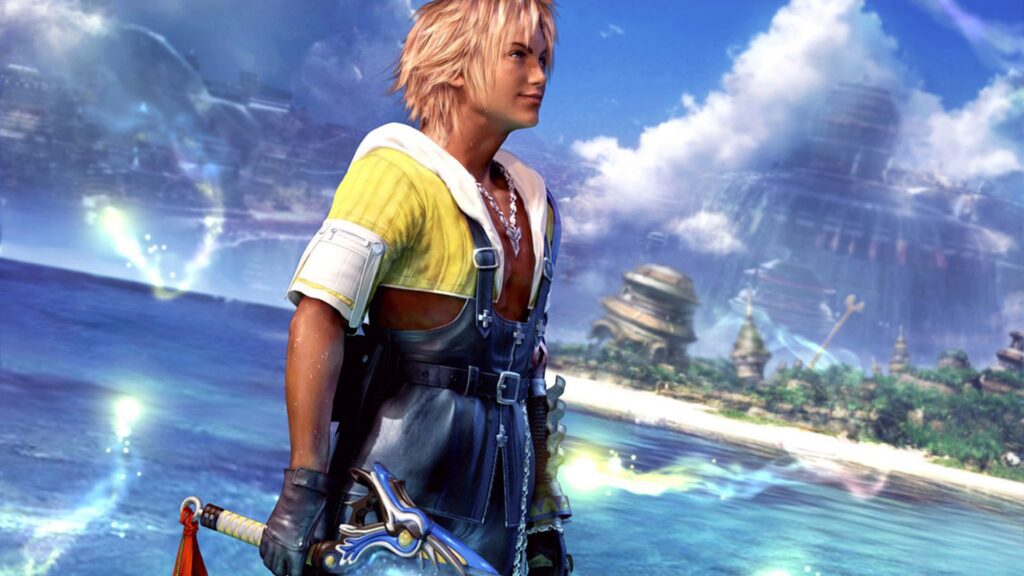
- A star’s legacy (and rejection): When Tidus’ father, Jecht, showed his son his signature “Jecht Shot”, he boasted that no one else could do it. Later, when Tidus performs the Jecht Shot, he refuses to name it after his father and insists anyone can do it, highlighting their vastly different characters.
- No love lost there: The intense love-hate relationship between Tidus and Jecht stems from their inability to express affection. Jecht, being a rough brute, often resorted to mockery, while Tidus, overly emotional, interpreted it as hatred, leading to their profound, yet misunderstood, bond.
- Tidus, the one-percenter: given that not much time passes between Jecht’s disappearance and his mother dying of grief, it is implied that Tidus is, in fact, the heir to a great fortune. That notion is even more bolstered when you consider the fact that Jecht was an incredible blitzball player (which implies he made tons of money). Granted, Tidus himself would become a prolific “blitzer” much like his father, but for a little while, at least, the kid sustained himself through Auron’s guidance and some pretty lofty financial cushioning.
- The hero who disappears: Final Fantasy X was the first mainline Final Fantasy game where the main protagonist, Tidus, is not physically present at the very end of the game, fading away after Sin’s defeat in a bittersweet conclusion. But no, he doesn’t return to “Dream Zanarkand”, because…
- The dream city was not a dream: for all intents and purposes, Tidus’ home city of Zanarkand was a real, physical place. Sustained by the Fayth (spirits of long-lost people who assisted summoners in their pilgrimage), the eponymous metropolis resides in a pocket dimension whose physical limits place it near Baaj Temple. Aside from Tidus, Auron, and Sin itself, the city, however, is impossible to reach for anyone.
Yuna, her family and the impact on her relationships
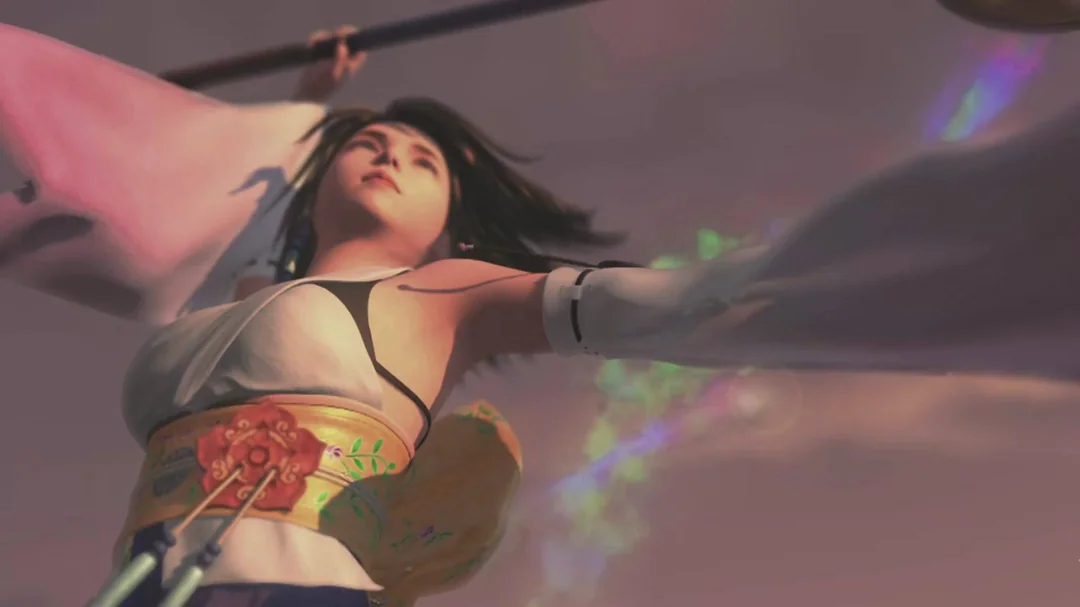
- Tragedy in the family: After running away from home in order to elope with Braska, Yuna’s mother tried to reconcile with her side of the family. However, she never fulfilled her wish, as she died in the sea looking to make amends with her brother, Cid.
- Overprotective guardians: Given the amount of loss Yuna has faced while growing up, both of her main guardians, Wakka and Lulu, display intense protectiveness towards her. This stems not only from their deep affection for her but also from their shared tragic pasts and losses to Sin, particularly Lulu’s relationship with Wakka’s deceased brother, Chappu. In fact, Lulu is the most stoic one, given that this is her third pilgrimage, having failed her previous two attempts.
Auron died too early, even though he doesn’t look like it
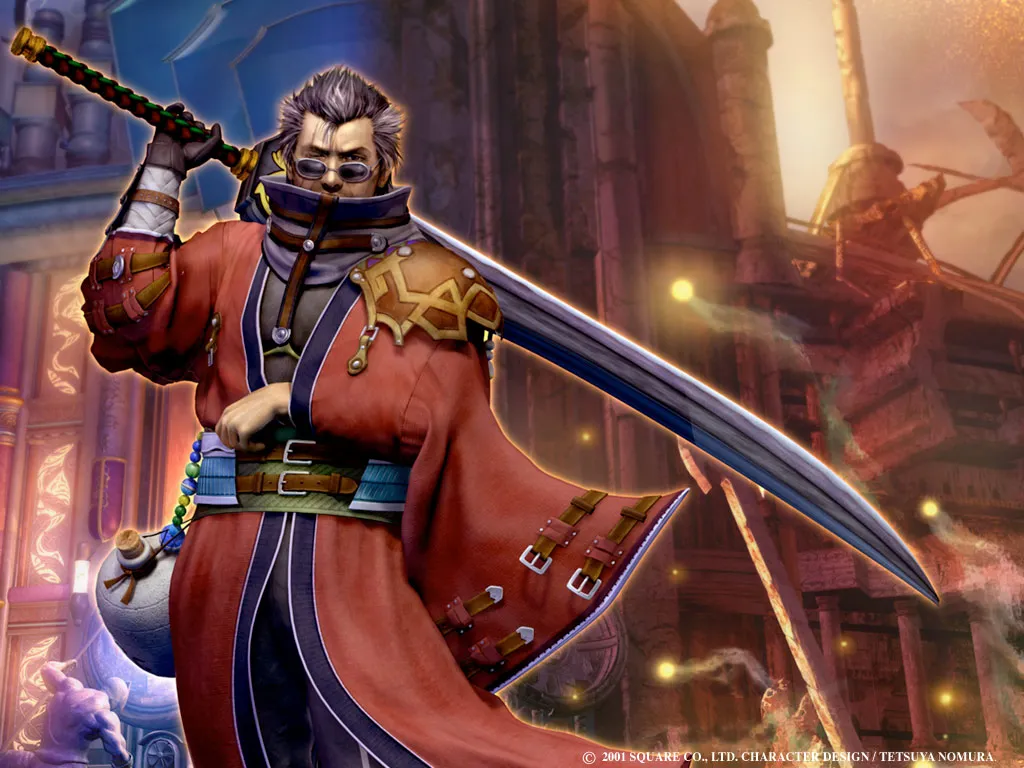
- Auron’s true age & appearance: While Auron appears to be your typical grumpy, old, and tired warrior, based on Final Fantasy X’s timeline of events, he’s actually 35 years old. During his previous pilgrimage, guarding Braska, he was around 25 years of age. Since the game does a time jump of 10 years to start Yuna and Tidus’ adventure, Auron has aged quite a bit, what with being dead this whole time and all. Which reminds us…
- Sixth Sense deja-vu: Auron is an “unsent”—essentially, a person who died, but whose spirit had such a strong connection it managed to linger physically, albeit no longer living. If you thought about 1999’s film “Sixth Sense”, you’re not the only one: much like Auron, Bruce Willis’s character in that movie also starts dead, the key difference being that Auron is fully aware of his condition. Funnily enough, the movie nearly derailed Square Enix’s plans as, originally, the “unsent” was supposed to be Tidus.
- Not-so-silent mentor: Auron’s most obvious trait is the fact that he’s supposed to play the “tall, silent, broody, handsome” trope. And the fact that his voice actor, Matt McKenzie, does such a fantastic job with it hides the fact that, in truth, Auron has the second highest number of dialog lines in the entire game, behind lead character Tidus. Such a yapper, huh?
Seymour’s fault is not (entirely) his own
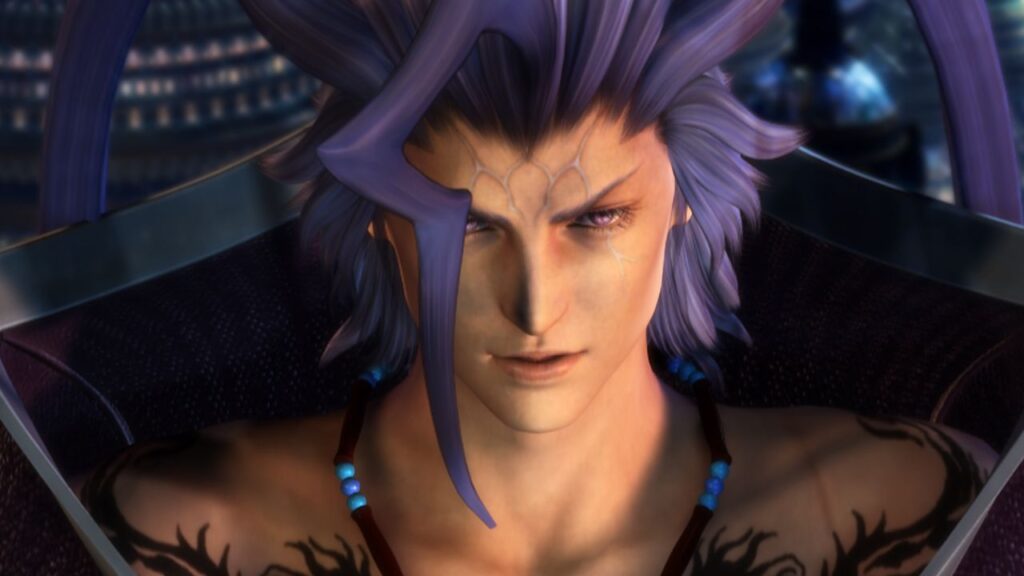
- A twisted family tree: Given antagonist Seymour Guado’s nihilistic view of the world, seeing death as some sort of ultimate release, you’d be forgiven to think that he is the child of trauma. Well, you would be right: Maester Jyscal Guado (Seymour’s father) hid his human wife and half-Guado son in Baaj Temple due to prejudice. In fact, Seymour’s mother willingly became the aeon known as Anima, hoping to give her son the power to end suffering by ending Sin. Yes, one of the most powerful aeons in the entire game was supposed to be a Final Aeon. When Seymour failed to use that power for what it was supposed to, both parents ultimately expressed regret for their son’s tragic path.
- Seymour’s design is the remnant of a scrapped gameplay mechanic: FFX players might notice that, among all the Guado race, Seymour is the only one with visible tattoos and some chest and torso skin shown. That’s because, originally, Final Fantasy X had a level up system based on tattoos the player would “install” on their characters’ bodies. Since Seymour is a playable guest character at one point, his design reflects that. The system, however, was scrapped halfway through the development process, giving way to the outstandingly famous Sphere Grid system.
- Kindred spirits: While his desire to become Yuna’s Final Aeon is clear, Seymour’s interest in proposing to her also had other reasons: in Yuna, he saw a soul mate due to their shared experiences of mixed heritage, lost parents, and prominent legacies for the generation that came before them. More than a symbolic union, Seymour saw his marriage proposal as a form of “poetry”, ruling a realm of death with his beloved.
O’aka, Wantz, and their contributions
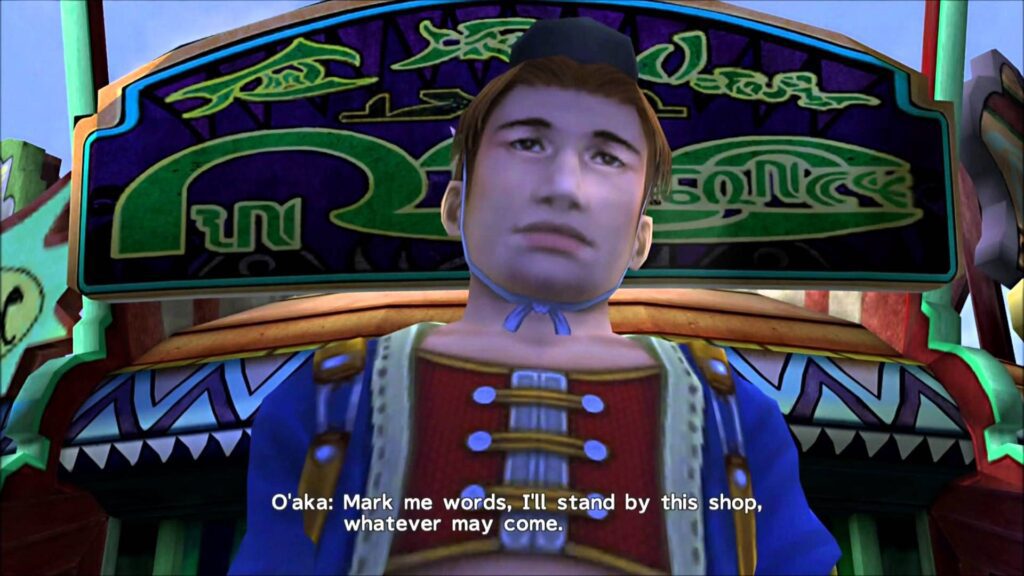
- O’aka’s understanding of a summoner’s role: O’aka and his younger brother, Wantz, seemingly appear whenever Yuna’s story arc goes through a major change of pace. This is not by accident: according to official lore, the brothers had a sister—a summoner, no less—and because she’s no longer with them, their grief and understanding of a summoner’s plight makes them want to help Yuna at all costs.
- The hidden voice trio: In the West, O’aka’s voice actor is the very prolific Dwight Schultz, but the oafish merchant is not his only work in the game: Schultz also voices the storyteller Maechen and the powerful Grand Maester Mika.
Game-changing innovations
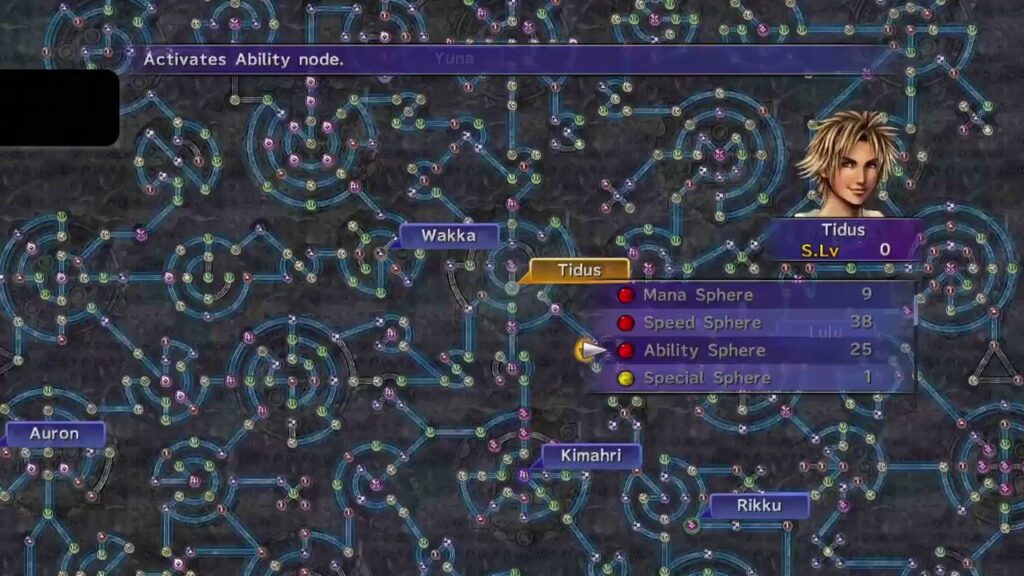
- A new voice for the series: Final Fantasy X was the first mainline game in the series to feature full voice acting, a significant milestone that changed how stories were told in Final Fantasy forever.
- First-person storytelling: FFX was groundbreaking as the first mainline Final Fantasy to heavily feature Tidus’s first-person narration via voice-overs, allowing players to experience events and revelations through his personal perspective.
- A direct sequel: Final Fantasy X was the first game of the entire franchise to have a direct sequel: Final Fantasy X-2 broke a long-standing Square Enix tradition by continuing the story and featuring most of the original cast—and a new story with several callbacks to the original plot.
- The coordinate system airship: While airships have been a Final Fantasy staple, FFX was the first game in the series to allow players to input specific coordinates on the airship’s map to discover hidden, secret locations. Previous games had you actually piloting the aerial vehicle.
- The Sphere Grid: before FFX, all games from the eponymous RPG franchise had a character progression system used by most games of the genre: accumulate enough experience points, level goes up by one, improving overall stats and paving the way for more skills. Final Fantasy X was the first in the series to switch to the Sphere Grid, where “pathways” allowed a more controlled progression for characters and kept gameplay balanced. The game’s remaster even took it one step further, unveiling a version of the Sphere Grid that removed all locks, giving players even more freedom to play creatively.
Development, design & writing
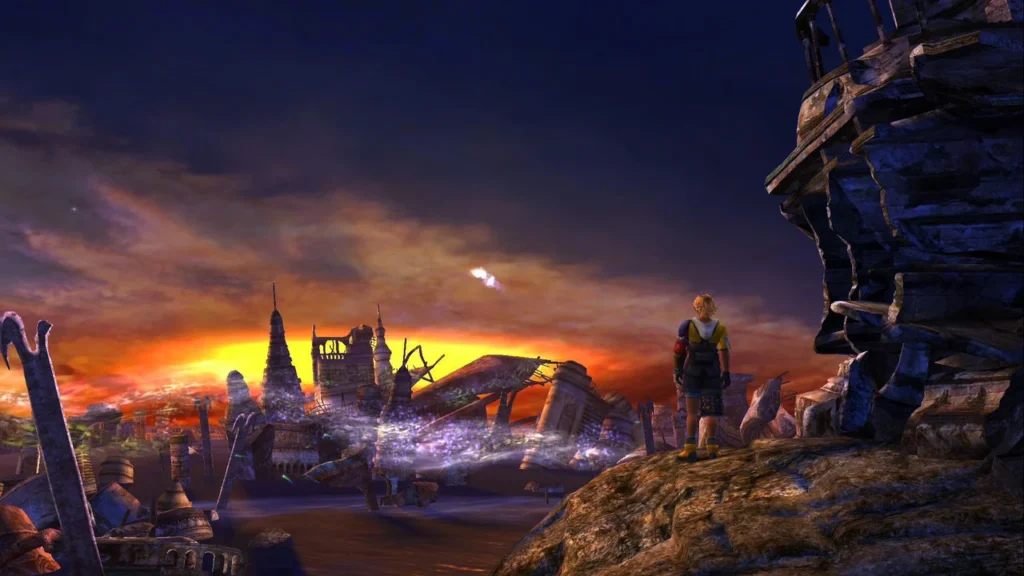
- Parental influence & destiny: A central theme of Final Fantasy X is how the actions and legacies of parents profoundly influence their children’s paths, often compelling them to follow in their footsteps, for better or worse, a deliberate narrative choice by the developers. Tidus hates Jecht, but becomes a guardian and a blitzball player just like his dad; Yuna loves her father so much she became a summoner just like him, knowing full well of the fate that befalls everyone of her class. Seymour resents the entire world due to his parents’ treatment of him as a child…the list goes on…
- No jumping here (initially)!: Early in development, Tidus didn’t have a “jump” button. The developers decided to add it later because they felt it was essential for an energetic, athletic character like him.
- Tidus’s localization makeover: In the original Japanese version, Tidus’s name is pronounced “Tiida.” It was changed to “Tidus” (Tee-dus) for the English release to avoid a direct pun on “Tidal” and water.
- A cast that screams “star power”: The English voice cast of FFX featured names that would become huge in the industry: James Arnold Taylor (Tidus), John DiMaggio (Wakka, also Bender from Futurama), and Tara Strong (Rikku, also Harley Quinn and Bubbles from Powerpuff Girls).
- Blitzball’s grand strategy origins: The immensely popular Blitzball mini-game was originally conceived as a completely different type of mini-game: a territory-capturing strategy game, not an underwater sport.
- The aquatic challenge of Spira: The game’s distinct aquatic theme and prevalence of water were a deliberate choice by director Yoshinori Kitase. It was a technical challenge for the developers to render convincing water effects on the PlayStation 2.
- The best song in the game almost wasn’t in the game: The melancholic and iconic opening theme, “To Zanarkand,” composed by Nobuo Uematsu, was one of the very first pieces of music completed for the game…and it was never supposed to be on it: according to Uematsu himself, it was originally part of a recital he was commissioned to compose, but ended up setting it aside, unused. A few years later, he admitted to falling behind schedule during FFX’s development: “When I was making the score for Final Fantasy 10, I was falling behind all the while the producers were hounding me”, he told Japanese channel Weekly Ochiai. “So since that piece was unused, I just kinda meekly handed it to them. They listened to it and said, ‘Yes! This is brilliant!.’”
So, did you knew about all of these? Which one impressed you the most? Do you know of any missing fact we left out? Let us know in the comments!


